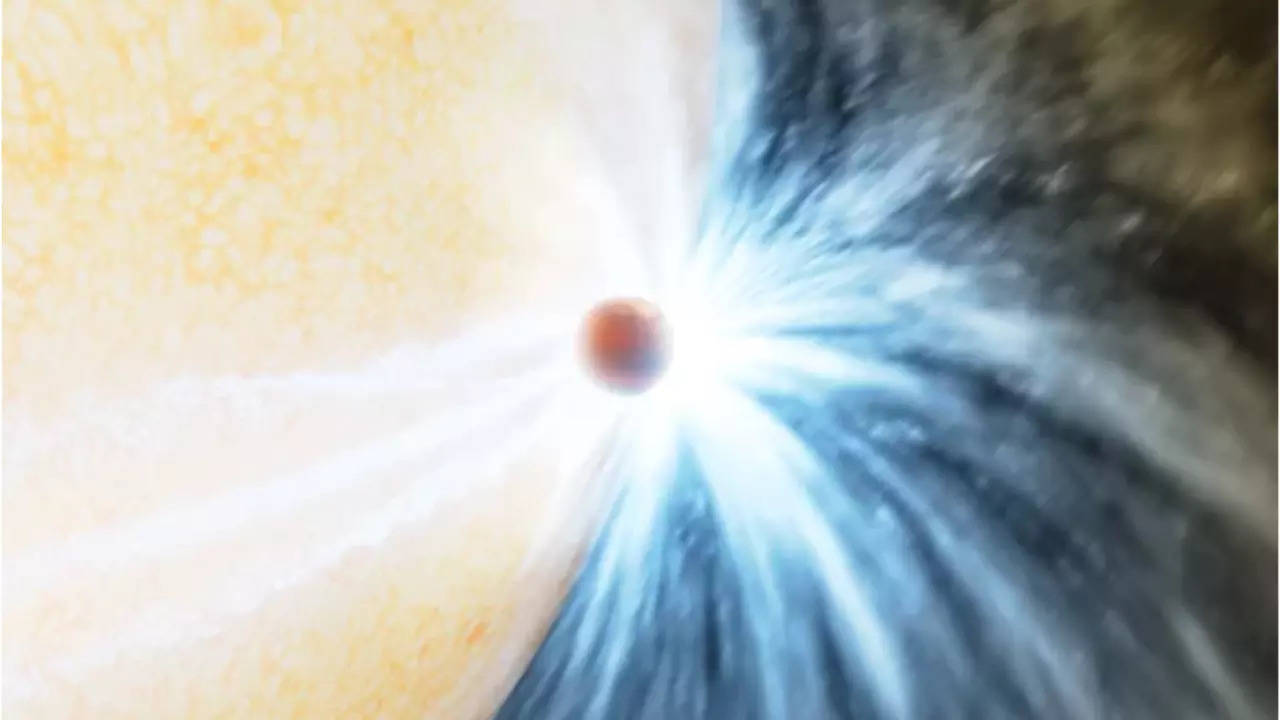Astronomers reported Wednesday the discovery of what could be two planets sharing the same orbit around their star.
They said it’s the strongest evidence yet of this bizarre cosmic pairing, long suspected but never proven.
Using a telescope in Chile, the Spanish-led team spotted a cloud of debris in the same orbit as an already confirmed planet circling this star, 370 light-years away in the constellation Centaurus. They suspect it’s either a planet in formation or remnants of a planet that once was.
Asteroids are known to accompany planets around their star – for example, Jupiter and its so-called Trojan asteroids. But planets in the same orbit “have so far been like unicorns,” noted study co-author Jorge Lillo-Box of Madrid’s Center for Astrobiology.
“They are allowed to exist by theory, but no one has ever detected them,” he said in a statement.
The scientists said they will need to wait until 2026 in order to properly track the two objects around the star known as PDS 70.
The confirmed planet with the suspected tagalong takes 119 years to complete a lap. A gas giant, it’s three times the size of Jupiter. Another gas giant is known to circle this star, albeit from a much greater distance.
Lead author Olga Balsalobre-Ruza of the Center for Astrobiology in Madrid, said the findings, published in the journal Astronomy and Astrophysics, are “the first evidence” that such double worlds might exist.
“We can imagine that a planet can share its orbit with thousands of asteroids as in the case of Jupiter, but it is mind-blowing to me that planets could share the same orbit,” she said in a statement.
They said it’s the strongest evidence yet of this bizarre cosmic pairing, long suspected but never proven.
Using a telescope in Chile, the Spanish-led team spotted a cloud of debris in the same orbit as an already confirmed planet circling this star, 370 light-years away in the constellation Centaurus. They suspect it’s either a planet in formation or remnants of a planet that once was.
Asteroids are known to accompany planets around their star – for example, Jupiter and its so-called Trojan asteroids. But planets in the same orbit “have so far been like unicorns,” noted study co-author Jorge Lillo-Box of Madrid’s Center for Astrobiology.
“They are allowed to exist by theory, but no one has ever detected them,” he said in a statement.
The scientists said they will need to wait until 2026 in order to properly track the two objects around the star known as PDS 70.
The confirmed planet with the suspected tagalong takes 119 years to complete a lap. A gas giant, it’s three times the size of Jupiter. Another gas giant is known to circle this star, albeit from a much greater distance.
Lead author Olga Balsalobre-Ruza of the Center for Astrobiology in Madrid, said the findings, published in the journal Astronomy and Astrophysics, are “the first evidence” that such double worlds might exist.
“We can imagine that a planet can share its orbit with thousands of asteroids as in the case of Jupiter, but it is mind-blowing to me that planets could share the same orbit,” she said in a statement.
Denial of responsibility! Swift Telecast is an automatic aggregator of the all world’s media. In each content, the hyperlink to the primary source is specified. All trademarks belong to their rightful owners, all materials to their authors. If you are the owner of the content and do not want us to publish your materials, please contact us by email – swifttelecast.com. The content will be deleted within 24 hours.


